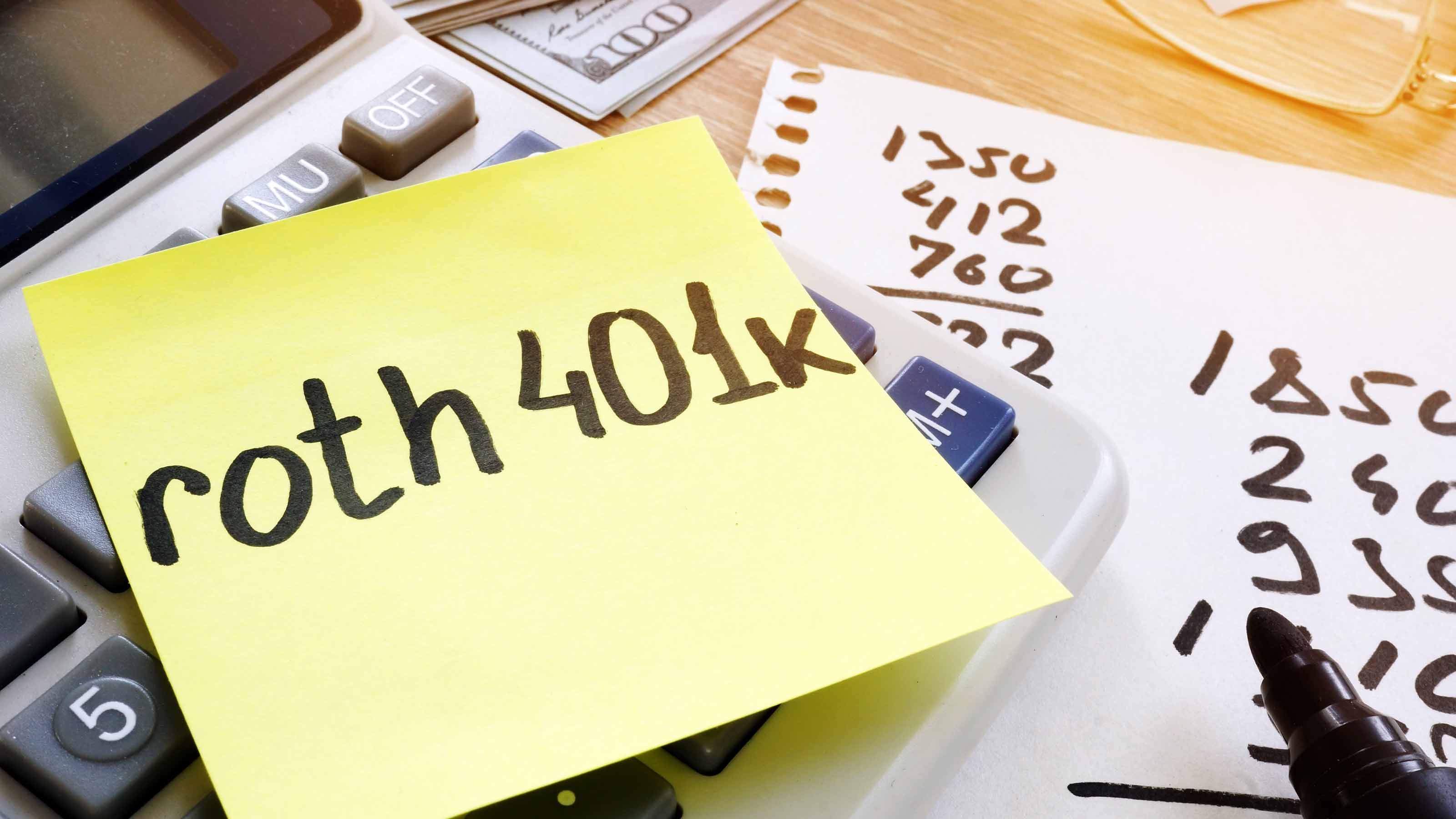SEP IRA Contribution Limits for 2026
A good option for small business owners, SEP IRAs allow individual annual contributions of as much as $70,000 in 2025, and up to $72,000 in 2026.


Donna LeValley
Self-employed workers and small-business owners who want an easy and inexpensive retirement plan should consider a Simplified Employee Pension IRA, or SEP IRA. SEP IRA plans are easier to establish than other retirement plans and typically have lower administrative costs.
The main advantage of a SEP IRA is that you can contribute up to 25% of your compensation, with a maximum of $70,000 in 2025. That figure will increase by $2,000 to $72,000 starting in 2026, per the IRS. These contributions are tax-deductible, and the earnings are tax-deferred. However, one key drawback is that there are no catch-up contributions for older workers.
What is a SEP IRA?
A SEP IRA is a retirement account for anyone who is self-employed, owns a business, or earns freelance income. SEP IRAs are available for a variety of small-business types, including sole proprietorships, partnerships, limited liability companies, S corporations and C corporations. The plans can be an especially attractive option for a small business with few employees.
From just $107.88 $24.99 for Kiplinger Personal Finance
Become a smarter, better informed investor. Subscribe from just $107.88 $24.99, plus get up to 4 Special Issues

Sign up for Kiplinger’s Free Newsletters
Profit and prosper with the best of expert advice on investing, taxes, retirement, personal finance and more - straight to your e-mail.
Profit and prosper with the best of expert advice - straight to your e-mail.
You don’t even technically need to have an established business to open a SEP IRA. Anyone who has self-employed income can open a SEP IRA, including freelancers and gig workers who aren’t considered employees.
Unlike some other retirement plans, a SEP IRA is created primarily as a vehicle for employer contributions, and not payroll deductions. Employers may make contributions to SEP IRA accounts subject to the limit of traditional IRA contributions. Unlike 401(k) plans, the funds in a SEP IRA cannot be used as collateral for loans. But, as soon as a contribution is made to a SEP IRA, the money is considered 100% vested and owned by the employee.
To be eligible to participate in an employer's SEP IRA, the IRS says employees must be at least 21 years old, have worked at the business for three of the past five years, and have earned at least $750 from the job in 2025. That figure increases to $800 in 2026. Employers may, however, set less restrictive eligibility rules. For example, they may enroll newly hired employees. But the rules must uniformly apply to all employees.
Employers may exclude employees from their SEP IRA plan if the employees are part of a union agreement that includes retirement benefits. They also may bar nonresident alien employees who do not have U.S. wages, salaries or other personal services compensation from the employer.
2025 SEP IRA contribution limits
For 2025, a self-employed business owner effectively can salt away as much as $70,000 a year, but no more than 25% of their compensation. That's an increase of $1,000 from the maximum of $69,000 in 2024. In comparison, a traditional IRA limits contributions to $7,000 for 2025 for those younger than 50, or $8,000 for those 50 or older thanks to a $1,000 "catch-up" contribution. SEP IRA contributions can be made through today, April 15, 2025, the same deadline as contributions to traditional IRAs.
2026 SEP IRA contribution limits
For 2026, a self-employed business owner can contribute up to $72,000 to a SEP IRA (an increase of $2,000 from 2025), but no more than 25% of their compensation. In comparison, a traditional or Roth IRA allows only $7,500 (up from $7,000 in 2025) for those under age 50, or $8,600 (up from $8,000) for those age 50 or older, thanks to the $1,100 catch-up contribution in 2026. SEP IRA contributions for the 2026 tax year can be made as late as your business tax filing deadline (including extensions), often as far out as September or October 2027 for many self-employed filers, which is more flexible than the April 15, 2027, deadline for traditional and Roth IRA contributions.
Like other individual retirement accounts, contributions are tax-deductible. But contribution rates are required to be uniform for all employees of a company that has a SEP IRA plan, including the owner. So while these plans offer small business owners an opportunity to save much more for their own retirement than they could with a traditional IRA, they have to contribute funds at the same rate to SEP IRA accounts for all their eligible employees.
The rate may change from year to year, a flexibility designed to help companies that may have differences in cash flow. Also note: contributions are calculated based only on the first $360,000 of an employee’s compensation in 2026. That's a $10,000 increase from the 2025 limit of $350,000.
SEP IRAs vs. traditional IRAs
SEP IRAs follow many of the same rules as traditional IRAs. You generally must be at least 59-1/2 to take withdrawals from the account without paying a 10% penalty.
SEP IRA account owners may take distributions at any time. But keep in mind that these distributions are subject to a 10% tax penalty if the account owner is under 59-1/2 years old and does not roll the funds over into another IRA or another employer’s retirement plan.
And once you turn age 73, you will have to start taking required minimum distributions (RMDs). You have until April 1 of the year after you turn 73 to take your first required minimum distribution, but after that you must take RMDs by December 31 of each year (even if you took your first RMD on April 1 of that same year). Prior to 2023, the mandatory RMD age was 72. It will increase to 75 in 2033.
Since employers make the contributions, not employees, catch-up contributions for retirement savers 50 and over are not permitted in SEP IRAs. However, employees have the responsibility of making investment decisions about their SEP IRA accounts.
The Benefits of a SEP IRA
SEP accounts have many benefits, including tax-deferred compounding and high contribution limits. They are a practical and no-nonsense way to save for retirement. A SEP IRA is easy to open and widely available at financial institutions that offer individual retirement accounts.
This type of account is also a good option for a worker with a side gig out of his or her regular job, as it allows the worker to contribute fully to his or her employer's 401(k) and use the SEP IRA for self-employment income.
Related Content
Profit and prosper with the best of Kiplinger's advice on investing, taxes, retirement, personal finance and much more. Delivered daily. Enter your email in the box and click Sign Me Up.
Jackie Stewart is the senior retirement editor for Kiplinger.com and the senior editor for Kiplinger's Retirement Report.
- Donna LeValleyRetirement Writer
-
 Got $100 to Gamble? These Penny Stocks Could Be Worth the Ride
Got $100 to Gamble? These Penny Stocks Could Be Worth the RideVolatile penny stocks are high-risk plays with potentially high rewards. If you have $100 you can afford to lose, these three names are worth a look.
-
 Being an Executor is a Thankless Job: Do It Well Anyway
Being an Executor is a Thankless Job: Do It Well AnywayYou can be a "good" executor of an estate, even though carrying out someone's final wishes can be challenging.
-
 Question: Are You Planning for a 20- or 30-Year Retirement?
Question: Are You Planning for a 20- or 30-Year Retirement?You probably should be planning for a much longer retirement than you are. To avoid running out of retirement savings, you really need to make a plan.
-
 457 Plan Contribution Limits for 2026
457 Plan Contribution Limits for 2026Retirement plans There are higher 457 plan contribution limits in 2026. That's good news for state and local government employees.
-
 Medicare Basics: 12 Things You Need to Know
Medicare Basics: 12 Things You Need to KnowMedicare There's Medicare Part A, Part B, Part D, Medigap plans, Medicare Advantage plans and so on. We sort out the confusion about signing up for Medicare — and much more.
-
 The Seven Worst Assets to Leave Your Kids or Grandkids
The Seven Worst Assets to Leave Your Kids or Grandkidsinheritance Leaving these assets to your loved ones may be more trouble than it’s worth. Here's how to avoid adding to their grief after you're gone.
-
 Roth IRA Contribution Limits for 2026
Roth IRA Contribution Limits for 2026Roth IRAs Roth IRAs allow you to save for retirement with after-tax dollars while you're working, and then withdraw those contributions and earnings tax-free when you retire. Here's a look at 2026 limits and income-based phaseouts.
-
 SIMPLE IRA Contribution Limits for 2026
SIMPLE IRA Contribution Limits for 2026simple IRA For 2026, the SIMPLE IRA contribution limit rises to $17,000, with a $4,000 catch-up for those 50 and over, totaling $21,000.
-
 457 Contribution Limits for 2024
457 Contribution Limits for 2024retirement plans State and local government workers can contribute more to their 457 plans in 2024 than in 2023.
-
 Roth 401(k) Contribution Limits for 2026
Roth 401(k) Contribution Limits for 2026retirement plans The Roth 401(k) contribution limit for 2026 has increased, and workers who are 50 and older can save even more.
-
 Is a Medicare Advantage Plan Right for You?
Is a Medicare Advantage Plan Right for You?Medicare Advantage plans can provide additional benefits beneficiaries can't get through original Medicare for no or a low monthly premium. But there are downsides to this insurance too.